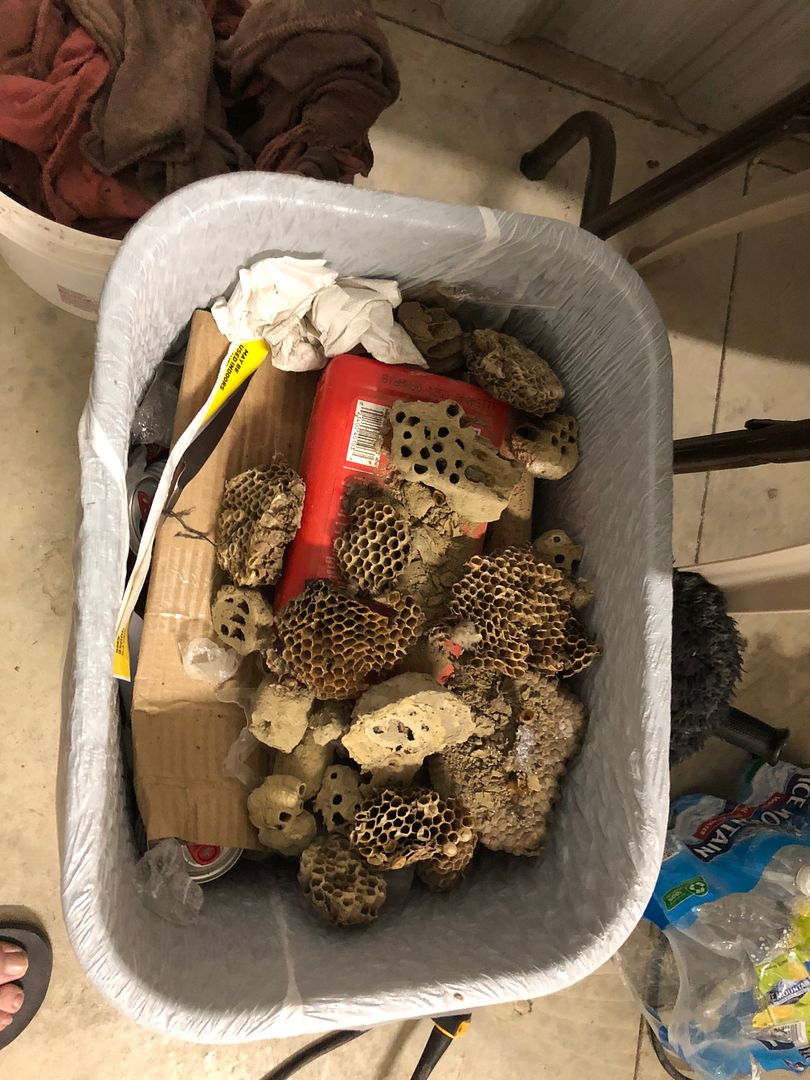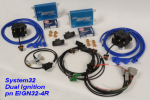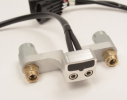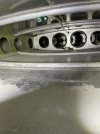Hello all. I recently purchased a Glastar with a Lyc O-320 (100hrs since OH) and M/S carburetor. Brought it home without incident. It has a FlyEFII legacy electronic ignition running two coils.
About 3 weeks ago, I was out for a routine ride at 3500ft, and engine power suddenly and quickly decreased to idle... panic time! Not windmilling, and didnt need to restart. Just like your CFI giving you a biennial and 'lets do a practice engine out'. No sputter, no roughness. Unfortunately, I did not keep a close eye on any Dynon HDX changes... was too busy. But about 20 seconds into this, engine power came back up to cruise. I headed straight back to home base, and about 15 miles out, it happened again. About 20 seconds of power down to idle, then it returned to cruise power. I did what I could... mixture rich, check ignition, (no aux fuel pump in this machine), and fuel on (only has on/off). Landed without incident.
We removed the carburetor and took it to a well known shop, but they said it looked fine and bench tested ok (and it even has the latest float). We reinstalled it, and then the fuel pressure transducer stopped working. I replaced that. Made sure air filter to bottom of carb wasnt kinked, and even checked valves (some CHT's re a bit high during this event). Drained all tanks a number of times... no water. I've been up for 2 rides in the pattern, to be safe. I now notice RPM changes on the ground. They are minimal. But today, after running it on the ground for a while, I saw RPM changes at idle. I made sure the friction lock was tight, set it at 1000rpm, and just watched it. It vacillated slowly from 1000-1100, then down to 940-950, then back up again, with pauses in between each change. I know the Dynon unit is very sensitive, but watching these idle changes worries me. If its doing this on the ground, it can easily happen up at altitude. I must mention this, tho... prior to this event, I noticed a number of barely noticeable minimal lurches in my seat while flying. No change in engine noise, no changes in power or other settings... but just an occasional 'torso moves forward in your seat'... like a very quick power decrease burp.. but with no other changes.
We initially focused on the carburetor... but with it being inspected and repaired, that shouldnt be the issue (unless it truly is a carb item and needs to be replaced). Maybe this is gunk in the fuel tanks? If it was, wouldnt there be sputtering/fuel starvation? I've drained so many times, and fuel remains totally clean. I also had Dynon look at the data logs, and they saw the power/RPM loss and fuel flow decrease during the event... but fuel pressure stayed normal.
I've messaged colleagues, and some folks had similar issues, with most turning out to be water in the tanks. A few did mention bad carburetors/floats/cotter pins in the bowl, etc.
Something is amiss. Any comments/thoughts/suggestions would be very welcomed. Thanks!
About 3 weeks ago, I was out for a routine ride at 3500ft, and engine power suddenly and quickly decreased to idle... panic time! Not windmilling, and didnt need to restart. Just like your CFI giving you a biennial and 'lets do a practice engine out'. No sputter, no roughness. Unfortunately, I did not keep a close eye on any Dynon HDX changes... was too busy. But about 20 seconds into this, engine power came back up to cruise. I headed straight back to home base, and about 15 miles out, it happened again. About 20 seconds of power down to idle, then it returned to cruise power. I did what I could... mixture rich, check ignition, (no aux fuel pump in this machine), and fuel on (only has on/off). Landed without incident.
We removed the carburetor and took it to a well known shop, but they said it looked fine and bench tested ok (and it even has the latest float). We reinstalled it, and then the fuel pressure transducer stopped working. I replaced that. Made sure air filter to bottom of carb wasnt kinked, and even checked valves (some CHT's re a bit high during this event). Drained all tanks a number of times... no water. I've been up for 2 rides in the pattern, to be safe. I now notice RPM changes on the ground. They are minimal. But today, after running it on the ground for a while, I saw RPM changes at idle. I made sure the friction lock was tight, set it at 1000rpm, and just watched it. It vacillated slowly from 1000-1100, then down to 940-950, then back up again, with pauses in between each change. I know the Dynon unit is very sensitive, but watching these idle changes worries me. If its doing this on the ground, it can easily happen up at altitude. I must mention this, tho... prior to this event, I noticed a number of barely noticeable minimal lurches in my seat while flying. No change in engine noise, no changes in power or other settings... but just an occasional 'torso moves forward in your seat'... like a very quick power decrease burp.. but with no other changes.
We initially focused on the carburetor... but with it being inspected and repaired, that shouldnt be the issue (unless it truly is a carb item and needs to be replaced). Maybe this is gunk in the fuel tanks? If it was, wouldnt there be sputtering/fuel starvation? I've drained so many times, and fuel remains totally clean. I also had Dynon look at the data logs, and they saw the power/RPM loss and fuel flow decrease during the event... but fuel pressure stayed normal.
I've messaged colleagues, and some folks had similar issues, with most turning out to be water in the tanks. A few did mention bad carburetors/floats/cotter pins in the bowl, etc.
Something is amiss. Any comments/thoughts/suggestions would be very welcomed. Thanks!




